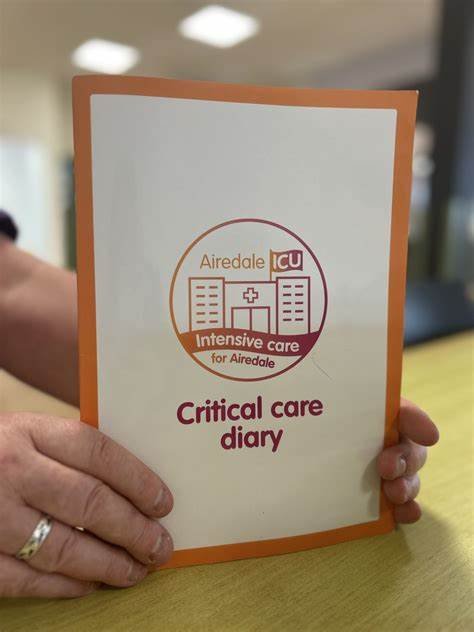When patients are in intensive care, effective pain management in intensive care is crucial for their recovery. Managing pain not only helps improve comfort but also promotes healing and can prevent complications. In this article, we’ll discuss strategies for effectively managing pain in intensive care units (ICUs). By understanding these methods, healthcare providers can enhance patient outcomes and overall satisfaction.
1. Comprehensive Pain Assessment
A vital first step in pain management is conducting a comprehensive pain assessment. This involves evaluating the patient’s pain level, type, and location. Healthcare providers should use standardized pain scales, such as the Numeric Rating Scale or the Wong-Baker FACES Scale, to gauge pain intensity. Understanding each patient’s unique pain experience allows for a tailored approach to pain management in intensive care.

2. Multimodal Pain Management
Using a multimodal approach is one of the most effective strategies for managing pain in the ICU. This method combines various pain relief techniques, including medications and non-pharmacological therapies. For example, healthcare providers may use a combination of opioids, non-opioid analgesics, and adjuvant medications to achieve optimal pain control. Additionally, incorporating physical therapy and psychological support can enhance overall pain management.
3. Continuous Monitoring
Continuous monitoring of patients is essential for effective pain management in intensive care. Regular assessments help identify changes in pain levels and allow for prompt adjustments to treatment plans. Advanced monitoring technologies, such as electronic health records and pain management apps, can facilitate real-time updates on a patient’s pain status. This approach ensures that pain relief measures are timely and appropriate.
4. Patient and Family Education
Educating patients and their families about pain management options is crucial. Understanding the available treatments empowers patients to communicate their pain experiences effectively. Providing information about pain control measures and the importance of reporting pain helps set realistic expectations. Family involvement in pain management discussions can also lead to better outcomes and increased satisfaction with care.
5. Pharmacological Interventions
Pharmacological interventions are a cornerstone of pain management in intensive care. Commonly used medications include opioids, non-steroidal anti-inflammatory drugs (NSAIDs), and local anesthetics. Opioids, such as morphine and fentanyl, are often used for severe pain, while NSAIDs can address mild to moderate discomfort. In some cases, nerve blocks or regional anesthesia may also be considered for targeted pain relief.
6. Non-Pharmacological Approaches
In addition to medications, non-pharmacological approaches play a significant role in managing pain. Techniques such as relaxation exercises, guided imagery, and deep breathing can help reduce anxiety and enhance comfort. Music therapy, massage, and acupuncture have also shown promise in alleviating pain. Incorporating these methods into pain management plans can improve patient satisfaction and overall well-being.
7. Psychological Support
Psychological factors can significantly influence a patient’s perception of pain. Providing psychological support through counseling or cognitive-behavioral therapy can help address anxiety, depression, and fear associated with being in intensive care. Mental health professionals can work with patients to develop coping strategies and resilience, enhancing the effectiveness of pain management efforts.
8. Early Mobilization
Early mobilization is an essential strategy for pain management in intensive care. Encouraging patients to engage in gentle movements and physical therapy can help reduce pain and improve recovery. Early mobilization not only enhances physical function but also decreases the risk of complications associated with prolonged bed rest. Collaborating with physical therapists to create individualized mobilization plans is vital.
9. Individualized Pain Management Plans
Every patient has unique needs and responses to pain management strategies. Creating individualized pain management plans based on each patient’s assessment is essential. These plans should consider factors such as the type of surgery, medical history, and personal preferences. Regularly reviewing and adjusting these plans ensures that pain relief remains effective throughout the patient’s stay in the ICU.
10. Collaborate with a Multidisciplinary Team
Effective pain management in intensive care often requires collaboration among a multidisciplinary team. This team may include doctors, nurses, pharmacists, physical therapists, and mental health professionals. Regular communication and teamwork help ensure that all aspects of a patient’s care are addressed. By working together, healthcare providers can create a comprehensive approach to pain management that meets each patient’s needs.
Conclusion
Pain management in intensive care is essential for promoting recovery and improving patient satisfaction. By implementing strategies such as comprehensive pain assessment, multimodal approaches, continuous monitoring, and individualized care plans, healthcare providers can enhance the effectiveness of pain relief. Educating patients and their families, incorporating non-pharmacological methods, and collaborating with a multidisciplinary team further improve outcomes. Ultimately, prioritizing pain management in intensive care helps patients feel more comfortable and supported during their recovery journey.











